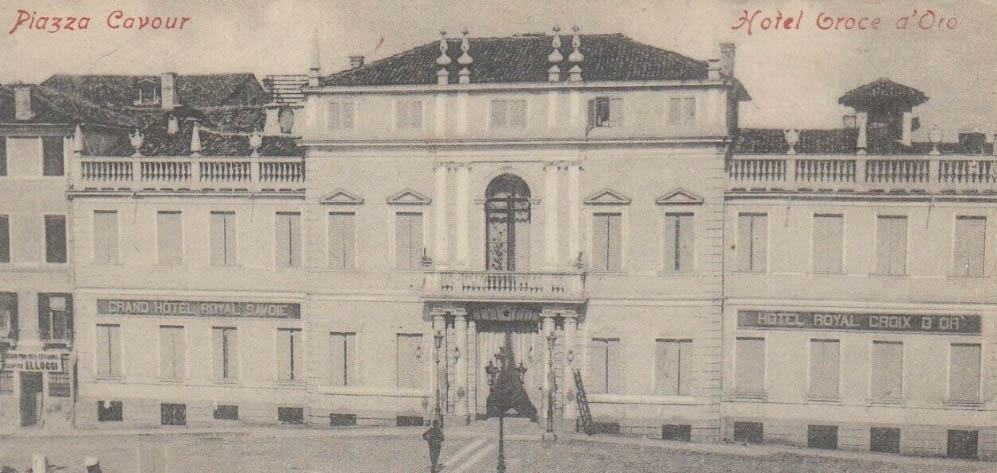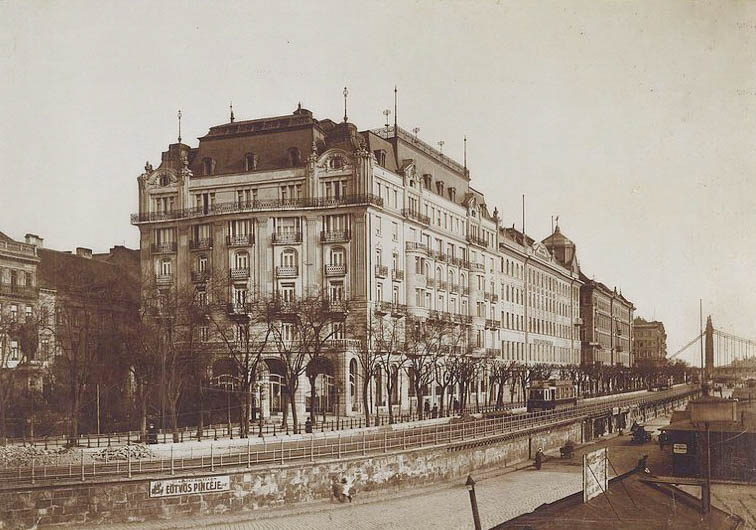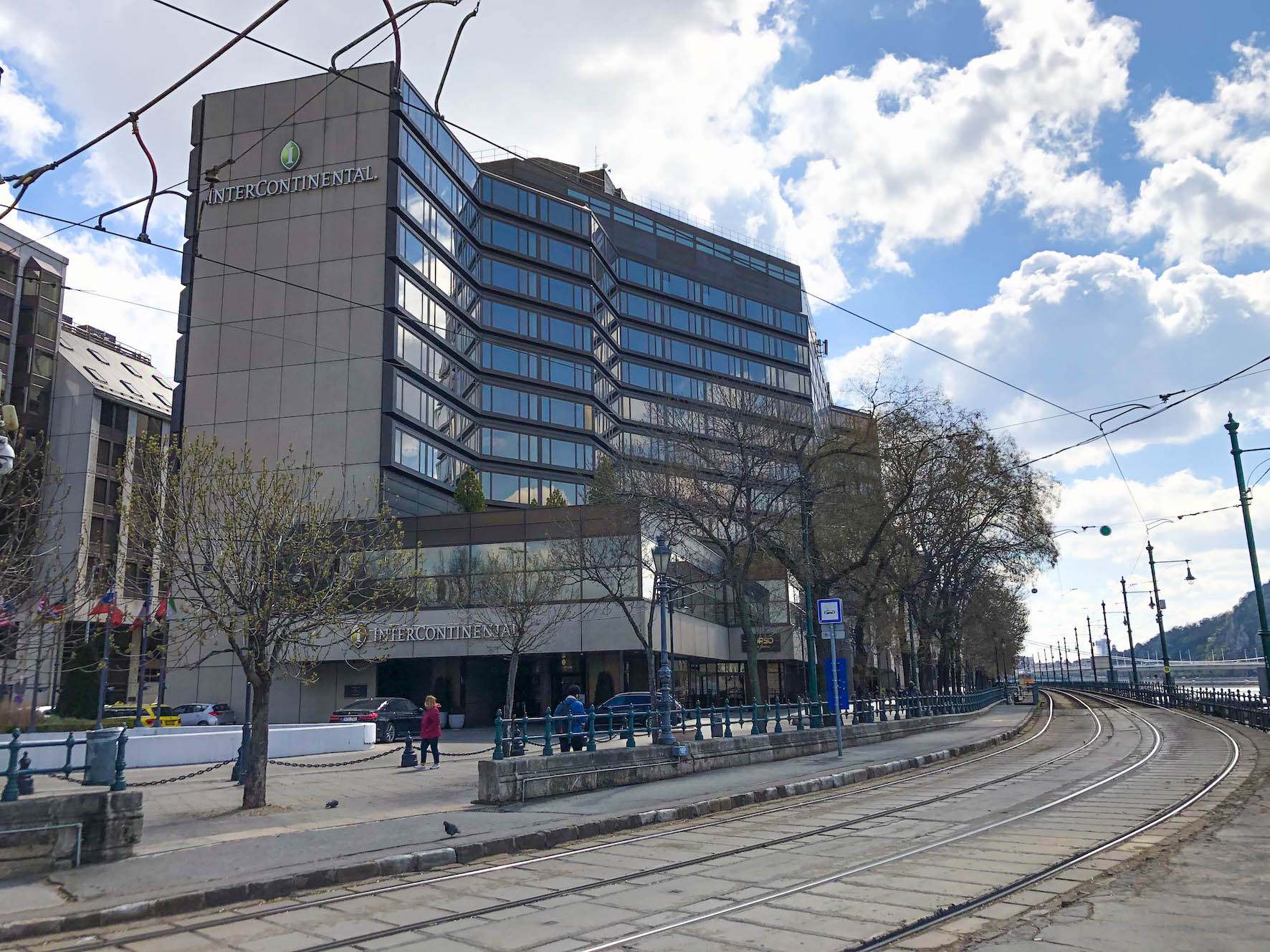‘I’m staying at the Excelsior. It’s a very fine hotel, and from my top-floor perch I can survey the whole city, right out to the bay, or towards the splendid bulk of Monte Pellegrino. I had a piano brought up to my room so I can work on my newest operetta.’
So writes Tibor Vida in his diary in Chapter II of The Remarkable Mrs Anderson. As the narrative progresses, more details are given about the Excelsior. In fact, all the way from Palermo, the minutiae of Mrs Anderson’s journey with Tibor are described and savoured with the precision of a leisured person’s travelogue. One senses that Bánffy is following them in his mind, reliving scenes that he too once experienced. After all, when he wrote this novella, in 1949, he had no internet search engine or Google Street View to help him with his research. But his descriptions are spot-on. Sitting in his small room in Kolozsvár/Cluj, in the single cramped apartment which had been allotted to him in his own now-confiscated town house, he must have been relying on memory, thinking back to lost days of freedom, sunshine and youth.
His memory was an accurate one. The Excelsior is not an invented hotel; it first opened its doors in 1891 and it still exists; in fact it is recommended as a place to stay in the most recent edition of Blue Guide Sicily. It lies north of Palermo’s historic centre, in a mainly 19th-century district, and its façade sports something very like the kind of balconies that Tibor Vida describes in Chapter V, after his room is broken into: ‘But how the devil would anyone get in through my balcony? Every room has its own balcony, and while they’re pretty broad, they certainly don’t meet one another. I’d estimate a gap of at least a metre and a half between my balcony and the next one, above a three-storey drop.’ There are more details, too, to lead us to suspect that Bánffy must have known this hotel from personal experience. He talks of a ‘nearby square’ where Mrs Anderson plans to hail a taxi. Yes, Piazza Mordini: the hotel’s south elevation looks onto it. And when Mrs Anderson goes out for a stroll ‘in the neighbouring English Garden with an “unknown gentleman” ’, this garden is clearly the Giardino Inglese, which is just round the corner from the Excelsior on Via della Libertà. Nor is it improbable that Tibor should have worked on his latest operetta at the Excelsior. After all, in a nearby building in 1882, Wagner completed Parsifal (in Palazzo Ingham, now the Grand Hotel et des Palmes). As a keen music aficionado, Bánffy would have known that.
For his villain, Schönberg-Belmonte, Bánffy chooses a different hotel, the Villa Igiea (and though he spells it ‘Igea’, it is definitely the same place). ‘I’m not staying in town, you see,’ Schönberg says airily, ‘but out at the Villa Igea, above the bay. Do you know it? It’s the most expensive hotel in the area, of course, but a charming place…’ It still is expensive: several hundred euro a night. Blue Guide Sicily describes it in the following terms: ‘A beautiful Art Nouveau building in Acquasanta, 3km north of the city. Built as a sanatorium by Donna Franca Florio, it never functioned as such. With the help of Ernesto Basile she pragmatically transformed it into a luxurious hotel for her friends. Cushiony salons abound; a peaceful refuge over the years for the rich and famous, besides many crowned heads.’ Since it was originally intended to be a sanatorium, its name makes sense. Igiea is the Italian version of Hygieia, the Greek goddess of health. Ernesto Basile (1857–1932), born in Palermo, was the most famous architect of his day, a major exponent of international Modernism and Art Nouveau and influenced by the Arab-Norman style of his native city. The beautiful Donna Franca Florio had a fabled collection of Cartier jewellery and a string of pearls seven metres long. Malicious gossip alleged that her husband gave her a new bead for every infidelity. Bánffy could not have chosen a more appropriate home-from-home for ‘Uncle Schöni’.
For Bánffy’s next specific hotel reference, we have to wait until Milla and Tibor get to Padua. Here, Mrs Anderson checks into the Croce d’Oro. Bánffy surely had an actual hotel in mind but this one is more difficult to pin down. The Guide Bleu of 1928 speaks of an hôtel meublé called the ‘Savoia-Terminus (ex-Croce d’Oro), tout près de la gare’ on Corso del Popolo. The building still stands, right outside the railway station, but it is no longer a hotel. Could Mrs Anderson have stayed there? Unlikely. ‘The bells of the cathedral were tolling Mass when she left the Croce d’Oro the next morning,’ Bánffy tells us. ‘Walking a little way down Via Dante, she soon came to the shop of Egisto Ristorini.’ But both the cathedral and Via Dante are a long way from the railway station, a good twenty-minute walk. So perhaps the hotel was a different Croce d’Oro (Padua seems to have had plenty with this name), perhaps the one listed in the Blue Guide Northern Italy of 1937, where a room cost 8 lire and full board 25 lire. The Blue Guide locates it in Via Cesare Battisti, a long, narrow, ancient street with low arcades on either side. It would have taken less than half the time to walk to Via Dante from there. But though this Croce d’Oro reappears in successive editions of the Blue Guide until 1960, there is no trace of any such hotel there now. However, there is another contender, and one which feels much more likely. Standing right in the middle of town on Piazza Cavour, it once boasted of being the first hotel in the city to have a lift, electric light in all the rooms, central heating, ensuite bathrooms and a motor omnibus service to the railway station.

The building still stands (it is now a bank). But it stopped operating as a hotel in 1920, some years before the events in Mrs Anderson take place. Bánffy probably did not know this. He may have stayed there before that date, remembered it, and incorporated it into his tale.
At the end of the novella, in Budapest, another grand hotel makes its appearance. ‘I’m staying at the Ritz,’ Tibor tells us. This is not the Ritz-Carlton of today, which occupies the former headquarters of an insurance company. The Ritz that Bánffy had in mind was one of a long string of glamorous hotels on the Danube bank. It opened in 1913, run by the same company that operated the Ritz in London, and old photos reveal that the building had something of the same elephantine bulkiness. In 1945, during the Siege of Budapest, when the Soviets chased the Nazis from the city after a month and a half of bitter fighting, it suffered a direct hit and was engulfed in flames. Two years later its remains were cleared away and in 1981 a new hotel, today’s InterContinental, opened on the site.


